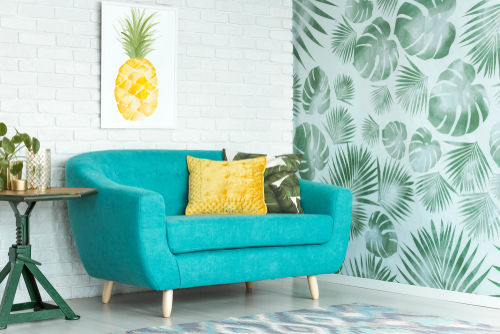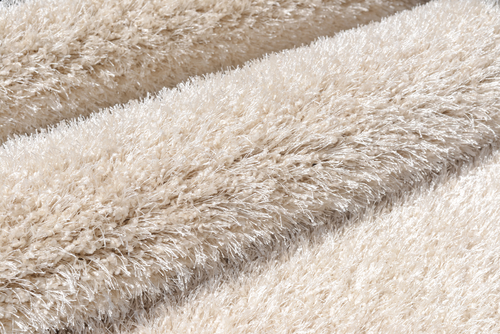
Why Is Removable Wallpaper A Better Choice For Singaporeans
January 8, 2023
How To Clean And Maintain Your Wallpaper Decals
March 17, 2023Eco-Friendly Wallpaper Options For A Sustainable Home
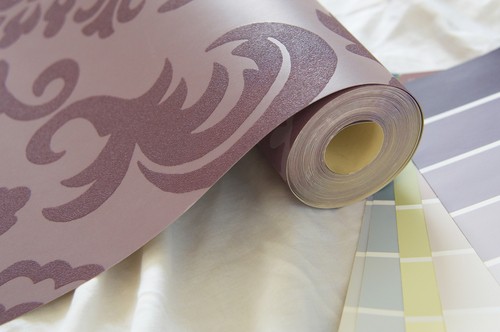
Eco-Friendly Wallpaper Options For A Sustainable Home. Wallpapers used to be the wall decor par excellence for every household worldwide until around the late ’60. This craze abruptly stopped when people started raising concerns about the chemical toxins in contemporary vinyl models.
Despite this, wallpapers are still valuable resources for hiding structural wall defects and revamping your house’s look and feel. Moreover, you’ll find many eco-friendly wallpaper options intermixed with a share of toxic ones. Keep reading to discover which ones would better suit your sustainable home.
Table of Contents
Eco-Friendly Wallpaper Options For A Sustainable Home

When browsing for wallpapers, you may come across many intriguing designs. However, make sure they meet the following conditions before hitting the buy button:
VOC-Free Wallpapers
Volatile organic compounds (VOCs) are chemical substances that, unfortunately, are present in a broad range of household items and products. Some examples of VOC sources include carpets, cosmetics, and even air fresheners.
Inhaling VOCs for prolonged periods can trigger a whole host of health problems. These include asthma, respiratory illnesses, and even cancer in many instances.
Double-check for any VOCs (e.g., methylene chloride, benzene, formaldehyde, etc.) when browsing for an eco-friendly wallpaper option. At the very least, VOC content should be at the lowest possible levels. PVC and vinyl wallpapers are totally out of the question!
If you want some peace of mind, look for a Grenguard badge. Greenguard-certified wallpapers should be free of VOCs for the most part.
Water-Based Ink Wallpapers
Ink covers a considerable portion of every wallpaper, so you ought to ensure that it is water-based and not solvent-based. Solvent-based pigment inks are prone to contain VOCs, increasing your exposure to the hazards we already described.
Toxic-Metal-Free and Flame-Retardant-Free Wallpapers
Could you verify that your wallpaper choice doesn’t have high (or any) traces of toxic metals like arsenic, mercury, cadmium, or lead? These are, unfortunately, awfully common in modern wallpaper offerings.
Furthermore, while less prevalent today than ten years ago, some market alternatives could still contain BFR (Brominated Flame Retardants). Other brands may have tin, silver, and titanium dioxide mixes, which also tax the environment.
Alternative to Vinyl Wallpapers
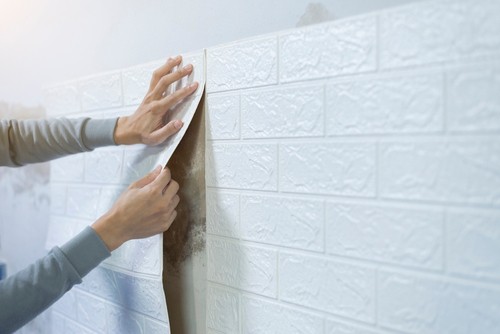
As of late, many wallpaper manufacturers have displayed admirable environmentally-conscious behavior in their production pipelines. This is evident in their efforts to seek vinyl substitutes with little chemical content. Such wallcovering material options include:
Recycled Paper
More and more companies are manufacturing wallpapers with a high percentage of recycled content (pre-and post-consumer waste). This helps alleviate the environmental costs of using virgin pulp or fiber.
Renewable Materials
You can also find aesthetically-pleasing wallcoverings made (and, at times, handmade) using a plethora of natural renewable materials. The catch is that their sources tend to have a fast growth rate, so there’s no danger of depletion. On top of that, their extraction process doesn’t entail substantial harm to the surrounding ecosystems.
These materials include:
- Bamboo – It resembles wood, but it’s a type of grass. This piece of data is of paramount importance, for grass generally grows at a much faster rhythm than timber. Makers use a paper backing with an adhesive to bind the bamboo reeds together and form the resulting panels.
- Cork – This material is commonplace in recording studios due to its dampening properties, but you may also turn it into your home “wallpaper.” Cork is essentially the tree’s outer bark, meaning there’s no need to cut it down for harvesting.
- “Living” wall – This is “greenery” at its finest! As you’d imagine, you’d virtually have a vertical garden thriving on the surface of your exterior and even interior walls. However, this arrangement may be quite costly in the long run and is not devoid of the usual “bug” problem. Still, it’s worth a try.
Reusable Wallpapers
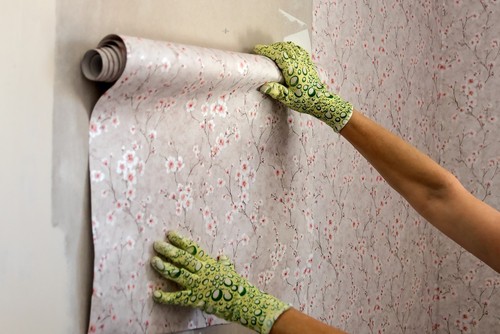
Last (but not least), you may consider reusable wallpapers instead (also called “removable” or “peel and stick”). A reusable wallpaper is a very convenient option, especially for renters and people who don’t commit to one place. It’s also handy for individuals who envision changing their wall design periodically.
Eco-Friendly Wallpaper Options For A Sustainable Home – Conclusion
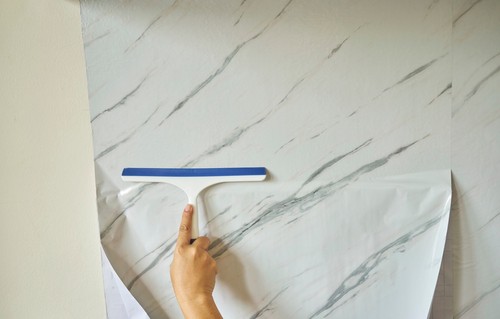
More important, however, is the prospect of helping the environment by encouraging reusing. This benefit to the environment is two-fold: You reduce waste that would otherwise populate our already overcrowded landfills.
Second, you avert the unnecessary extraction of new raw materials to produce more wallpapers. This makes reusable wallpapers an ideal sustainable alternative to other types of decor.


